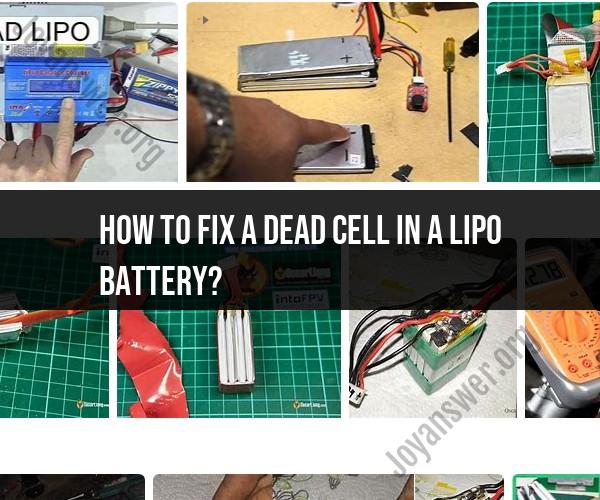How to fix a dead cell in a LiPo battery?
Fixing a dead cell in a LiPo (Lithium-Polymer) battery can be challenging and potentially dangerous if not done correctly. A dead cell in a LiPo battery can lead to reduced performance or even a dangerous situation, so it's essential to approach this cautiously. Here's a step-by-step guide, but please proceed with caution, and be aware of the risks involved:
Materials You Will Need:
- Dead LiPo battery
- A multimeter
- A soldering iron and soldering equipment
- Replacement cells (if necessary)
- Safety goggles and gloves
Steps:
Safety First: Always wear safety goggles and gloves when working with LiPo batteries. Work in a well-ventilated area, away from flammable materials.
Voltage Check: Use a multimeter to check the voltage of each cell in the LiPo battery. A standard LiPo cell should have a voltage of approximately 3.7 volts when fully charged. If one cell has significantly lower voltage or reads zero, it's likely the dead cell.
Isolation: Once you've identified the dead cell, isolate it from the other cells. If the dead cell is part of a multi-cell pack (e.g., 2S, 3S, 4S), disconnect the dead cell's positive (red) and negative (black) wires from the balance lead and main discharge lead, respectively. This isolates the dead cell.
Discharge: Carefully discharge the dead cell to 0 volts using a LiPo discharger or an appropriate resistor. This step is essential to make the cell safe for further work.
Replacement Cell (Optional): If you have access to replacement cells of the same capacity and voltage, you can replace the dead cell. Use a soldering iron to carefully desolder the dead cell and solder in the replacement cell. Ensure you have the polarity correct.
Balance Lead Check: Ensure that the balance lead wires are correctly connected to the remaining cells. The balance lead is vital for balancing the voltage across all cells in the pack.
Charge and Balance: If you've replaced the dead cell or if you were able to recover it through discharge, charge the LiPo battery using a balanced LiPo charger. Always use a LiPo charger with a balance function. Charge the battery at a slow rate and monitor it closely during the process.
Monitor for Heat: While charging, be vigilant for any signs of excessive heat or swelling. If the battery becomes excessively hot or swells, stop charging immediately and dispose of the battery properly.
Regular Maintenance: To avoid dead cells in the future, maintain your LiPo batteries properly. Store them at the correct voltage, avoid over-discharging, and follow safe charging and storage practices.
Dispose of Unrecoverable Batteries: If you cannot recover the battery or if it shows signs of physical damage, dispose of it properly at a recycling center that accepts LiPo batteries. Do not puncture or incinerate LiPo batteries.
Remember that working with LiPo batteries carries risks of fire and injury, so exercise extreme caution. If you're uncertain about any steps or if the battery remains unreliable after attempting recovery, it's safer to dispose of it properly and purchase a new one. Safety should always be your top priority when dealing with LiPo batteries.












